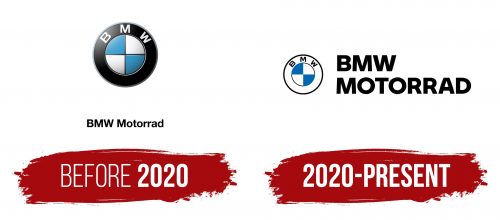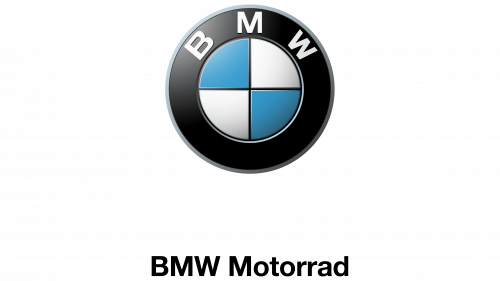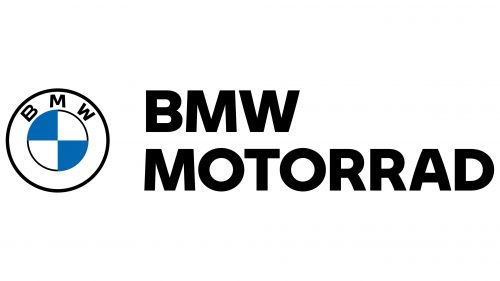The BMW Motorrad logo reflects the brand’s long history and traditions, which have Bavarian origins. At the same time, the emblem highlights the company’s specialization in high-speed motorcycles designed for city roads and racing tracks.
BMW Motorrad: Brand overview
BMW Motorrad’s origins date back to 1921, when the company—which had previously focused on producing aircraft engines—decided to expand its product line following World War I. The M2B15 engine, which the firm sold to other motorcycle manufacturers, marked the beginning of the motorcycle industry.
BMW debuted the R32, their first motorcycle, in 1923. With its two-cylinder boxer engine and shaft drive, this machine was groundbreaking. For many years, this style served as the company’s signature.
The business saw significant development during the 1930s. The firm started participating in motorcycle races, which helped enhance technology and boost consumer interest in the brand. The first motorbike with a hydraulically damped telescopic fork was the 1935 R12.
During World War II, the company stopped making civilian bikes and concentrated on creating military gear, such as the sidecar-equipped R75 motorcycle.
The manufacturer encountered difficulties following the war due to manufacturing limitations and destruction. However, the company started making motorcycles again in 1948, starting with the R24 model.
The 1950s were a time of invention and recuperation. In 1955, the company added a new swingarm rear suspension to the R50 and R69, greatly enhancing handling and riding comfort.
The motorcycle industry was in trouble during the 1960s, but the brand survived because of its reputation for building dependable and high-quality motorcycles.
The company started growing its model lineup in the 1970s. The R90S, a sports motorcycle that the firm debuted in 1973, revamped the brand’s perception. The manufacturer pioneered a new market sector in 1980 with the release of the R80 G/S, the first significant touring enduro.
The model range was significantly expanded, and technological advancements were made during the 1980s and 1990s. The company unveiled the first motorcycle in history to use an anti-lock braking system (ABS) in 1988.
1993, the brand broke the boxer engine design convention by introducing a four-cylinder inline engine to the K1100RS model.
There were more successes in the 2000s. The R1200GS, which the manufacturer debuted in 2004, quickly became a best-seller. The firm launched the S1000RR into the sportbike segment in 2009.
The business continued to broaden its model lineup in the 2010s, introducing several popular models in various market niches. Along with continually developing innovations for comfort and safety, the manufacturer introduced electronic rider aid systems.
2020 the company debuted the R18, a new cruiser with the biggest boxer engine in history. This bike represented a significant advancement in the cruiser market, which American manufacturers have historically controlled.
The well-liked R1250GS model received an update in 2021 that included new features like adaptive cruise control.
The M1000RR, the first motorbike to have the fabled “M” emblem from BMW’s car division, was unveiled by the firm in the same year. The S1000RR’s high-performance variant is intended for track and racing enthusiasts.
In 2022, a new version of the legendary touring motorbike, the R1250RT, was introduced, with cutting-edge features like adaptive cruise control via radar.
The company also refreshed its mid-range lineup in 2022, releasing new iterations of the F750GS and F850GS with enhanced features and cutting-edge technologies.
The firm announced plans to increase the number of electric two-wheelers in its lineup. In 2023, it unveiled an upgraded CE 04 electric scooter as part of its ongoing development of electric vehicles.
Throughout this time, the manufacturer actively researched safety and rider aid systems. The new features include active cruise control, collision warning, and enhanced ABS for off-road riding.
The company continued with its involvement in motorsports, especially the World Superbike Championship, which helped advance the development of technologies for motorcycles intended for mass manufacturing.
The firm increased its market share in developing nations by launching models, especially for Asia and other growing countries.
The manufacturer has become one of the top motorcycle producers in the world by staying true to its founding values of innovation and quality throughout the years. It has consistently developed new technology and broadened its model lineup.
Meaning and History
What is BMW Motorrad?
This is a subsidiary of the well-known German automaker BMW, which manufactures motorcycles that blend engineering precision with the thrill of racing. It is renowned for creating two-wheeled vehicles that offer the perfect combination of performance, reliability, and comfort, utilizing advanced technologies from the automotive division. The brand’s motorcycles are popular among many riders, from long-distance travel enthusiasts and off-road adventurers to urban dwellers. Distinctive features include unique boxer engines and shaft drives. The lineup includes sports bikes, touring models, adventure motorcycles, and stylish urban scooters.
Before 2020
BMW Motorrad is a division of Bayerische Motoren Werke, so it uses a similar logo to emphasize its connection to the renowned German company. The designers didn’t alter the visual symbol, preserving its traditional shape and colors associated with high-quality vehicles.
The round emblem looks like a wheel—primarily due to the wide black frame that resembles a tire. Inside, there are four triangles: two white and two blue. This is not just a geometric abstraction but a stylized propeller, a reminder that the company started as a manufacturer of aircraft engines. The blue-and-white color scheme is taken from the flag of the Kingdom of Bavaria, where Bayerische Flugzeugwerke (the predecessor of Bayerische Motoren Werke) was founded in 1916.
Thus, the BMW Motorrad logo emphasizes Bavarian origin and historical connection to aviation. The minimalist design reflects a commitment to modern technologies used by the motorcycle manufacturer. Another manifestation of innovation is the gradient that covers all emblem elements. It transforms the ordinary flat design into a three-dimensional object, giving it a subtle matte sheen.
Next to the round symbol is the brand name. It is in the same font as the “BMW” abbreviation in the black ring: a strict geometric grotesque with clear strokes. The classic design makes the wordmark simple and unremarkable, while the inscription’s readability is enhanced, increasing the brand’s recognizability.
2020 – today
The BMW Motorrad company has significantly simplified its logo to match the popular minimalist style. This change affected the round emblem, which previously appeared visually complex due to its layers and gradient. By removing the smooth color transitions, the designers gave the image a standard flat look. However, the overall composition remained the same.
- The center features a circle divided into four segments. It symbolizes a spinning propeller, as Bayerische Motoren Werke originally focused on producing aircraft engines. The white and blue represent the Bavarian flag’s colors, the motorcycle brand’s historical homeland.
- The emblem is placed within a heavy ring with the inscription “BMW.” The designers swapped the colors, making the letters black and the border white. A thin, dark line runs along the edge to prevent the emblem from blending into the surrounding space.
Despite its simple two-dimensional appearance, the logo still evokes the wheel image, emphasizing the motorcycle manufacturer’s field, closely tied to the automotive company Bayerische Motoren Werke. The round shape creates a sense of closure and continuity, while the wide border resembles a racing track where superbikes speed along.
An abstract symbol dominated the previous logo, but now it has become significantly smaller, yielding in size to the adjacent text. The brand’s name is split into two lines and aligned to the left for visual balance. For the same purpose, the designers made all the letters uppercase so the abbreviations no longer look bulky and are balanced with the second word.
The serious, bold sans-serif font evokes a sense of confidence intended to be felt when looking at the brand’s motorcycles. This is exactly what the company aimed to show: its two-wheeled vehicles are highly reliable and built using innovative technologies and modern components. The black color enhances the expressiveness of the text, and its strictness underscores BMW Motorrad’s high professionalism and engineering excellence.






